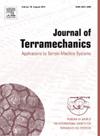Terrain classification and rock abundance analysis at Utopia Planitia using Zhurong image data based on deep learning algorithms
IF 3.7
3区 工程技术
Q3 ENGINEERING, ENVIRONMENTAL
引用次数: 0
Abstract
The complexity of image scene information presents challenges for the trafficability assessment and path planning of Mars rovers. To ensure the operational safety of Mars rovers and extract terrain features from complex image scenes, this paper develops an end-to-end deep learning model, using the deep convolutional neural networks ResNet50 and DeepLabV3 + as the framework, with images from the Zhurong rover’s navigation camera as the training and test datasets. A deep learning model suitable for classification and segmentation of terrain in the Mars Utopia Planitia region has been established and applied to planetary geology research. The classification accuracy of model exceeds 83.90 % and segmentation accuracy exceeds 80 %. Subsequently, an analysis of 1309 raw images from the navigation camera yielded 203,744 individual estimates of rock abundance, the model evaluates the rock abundance in the Utopia Planitia region, where the Zhurong rover is located, at 10.94 %. The terrain classification model proposed in this study provides both engineering and scientific value for future rovers on the Utopia Planitia.
基于深度学习算法,利用祝融影像数据对乌托邦行星进行地形分类和岩石丰度分析
图像场景信息的复杂性给火星车的交通性评估和路径规划带来了挑战。为了确保火星车的运行安全,并从复杂的图像场景中提取地形特征,本文以深度卷积神经网络ResNet50和DeepLabV3 +为框架,以 "祝融号 "火星车导航相机的图像为训练和测试数据集,建立了端到端的深度学习模型。建立了适用于火星乌托邦地区地形分类和分割的深度学习模型,并将其应用于行星地质研究。模型的分类准确率超过 83.90%,分割准确率超过 80%。随后,对导航相机拍摄的 1309 幅原始图像进行了分析,得出了 203744 个岩石丰度估算值,该模型评估出 "祝融 "号探测器所在的乌托邦星区的岩石丰度为 10.94%。本研究提出的地形分类模型为未来在桃花星上的漫游车提供了工程和科学价值。
本文章由计算机程序翻译,如有差异,请以英文原文为准。
求助全文
约1分钟内获得全文
求助全文
来源期刊

Journal of Terramechanics
工程技术-工程:环境
CiteScore
5.90
自引率
8.30%
发文量
33
审稿时长
15.3 weeks
期刊介绍:
The Journal of Terramechanics is primarily devoted to scientific articles concerned with research, design, and equipment utilization in the field of terramechanics.
The Journal of Terramechanics is the leading international journal serving the multidisciplinary global off-road vehicle and soil working machinery industries, and related user community, governmental agencies and universities.
The Journal of Terramechanics provides a forum for those involved in research, development, design, innovation, testing, application and utilization of off-road vehicles and soil working machinery, and their sub-systems and components. The Journal presents a cross-section of technical papers, reviews, comments and discussions, and serves as a medium for recording recent progress in the field.
 求助内容:
求助内容: 应助结果提醒方式:
应助结果提醒方式:


